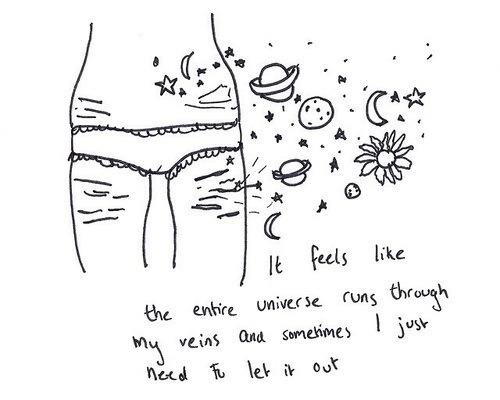Trigger Warning: Article discusses mental illness coinciding with self-harm and suicidal tendencies.
For years, there have been countless reports regarding the startling increase of self-harming young people. Statistics show that 13% of teenagers between 13 and 19 purposefully self-injure themselves. Self-harm is a difficult concept for some people to grasp, but each self-harming individual has a valid reason as to why they do it. It is not an act to dismiss as a ploy for attention, and needs to be rightfully acknowledged as a coping mechanism for those dealing with severe mental illness. In a survey, when asked why they self-harm, 55% of self-harmers said it was a way to get their mind off of the problems they face, and 45% said it was a way of calming themselves.
The act of physically harming oneself to coincide with emotional pain is a way of displacing the mind from the reality of one’s emotions, trauma, suicidal thoughts, or mental health. One self-injurer may have a different explanation as to why they do it then the next, some people don’t even have a personal understanding as to why they self-harm. Note there are several different types of self harm such as; cutting, burning, hitting/punching self or an object, carving, hair-pulling, scratching, or pinching. Medical professionals have also consider disordered eating and addictive behaviors methods of self-harm as well. No matter the root or the method of one’s self-injury, its an issue that needs to be handled seriously and immediately. The direct connection between mental illness and self-harm means that those who engage in self-harm are at a much higher risk of attempting suicide.
There has been knowledge of the alarming amount of self-harming teens for years. In 2014, there was a 70% increase in 10-14 year olds in the UK receiving treatment in A&E related to self-harm. Every year the statistics increase and yet proper education for young people as to why it happens is practically non-existent. Teens hear about self-harm from the wrong sources, such as posts on Tumblr and other social media which view the epidemic as a trend, and actively romanticize it with posts that treat it like art. A subculture is created on these social media platforms that makes light of and easily trigger those dealing with self harm.
(Trigger Warning: The following images are Tumblr posts that make light of and romanticize self-harm.)



Since young people suffering mental illness aren’t getting proper education on the risks of self-harm, this is likely their only exposure to the topic. Teens suffering mental illness can feel very isolated and look to social media for people who will listen and relate to them. Posts that romanticize self-harm can actually encourage mentally unstable young people to engage in self-injury. I know from personal experience, and discussion with peers, that these online communities are anything but helpful. It is can be quite triggering for the mentally ill to be surrounded by people discussing the escape from relief self-harm brings them. Often these online communities are not created to help one another, but rather to accept one’s illness as incurable and further immerse them into the idea of self-injury and its “perks.”
Self-harm isn’t a trend. Maybe you don’t come across as many Tumblr posts about self-harm as you did a few years ago, but it doesn’t mean the issue has gone away. It’s not something people join in for a short while but then back out of when they realize the consequences. It is a way of coping with mental illness and emotional pain. People have trouble stopping because it is a way of releasing themselves from reality. Unless they receive treatment for their mental illness, it is not likely they will stop self destructive behavior (even then it is a very addictive behavior and relapse is common). Until we start recognizing self-harm as a serious issue that leads to further mental illness and a greater chance of suicide, the statistics will continue to increase.
Starting conversations about self-harm is important. If mentally ill young people don’t hear about it from a reliable source, they are likely to come across posts such as the ones above that provide a damaging ideology. It is important they know there is nothing beautiful or admirable about self-harm like the posts suggest. It is not something to be shameful of, but that doesn’t mean it should be promoted. Acknowledge self harm for what it is; a destructive behavior that reflects one’s inner emotional problems and mental instability. Speak to youth about the reality of self-harm and be a caring support system.
Here are some good sources that discuss the reality and treatment of self-harm: Help Guide, Teen Rehab Center, Teens Health






Comments are closed.